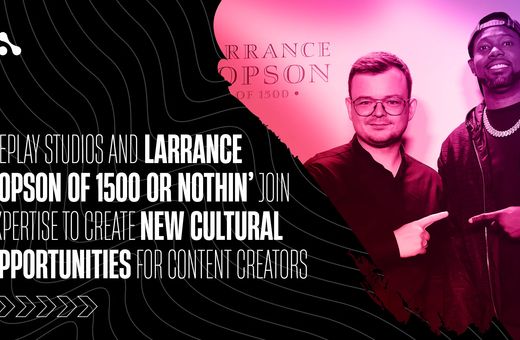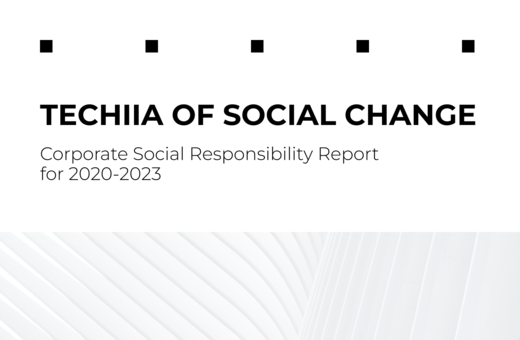
Photo: press-service WePlay! Esports
The growth of esports as an industry is impressive: in 2016, according to the Esports Market Report, its revenue amounted to 493 million dollars, while in 2018, it was already 906 million, which is 84% more, and forecasts promise growth to 1.65 billion by 2021.
Still, it is felt that this is not the limit, and the industry lacks the support of large brands.
What are we talking about?
Esports is an industry, a business, a culture. Even those whose interaction with computer games was limited to a Solitaire have heard of such esports titles as League of Legends, Dota 2, or CS:GO. Today, esports athletes have become the idols of a multi-million dollar community for which esports is both a profession and a meaning of life.
Esports have formed professional teams whose popularity and fees are already comparable with the contracts of show business stars and representatives of traditional sports. That's why esports is more often considered as an object for investment. Goldman Sachs' "Esports. From Wild West to Mainstream" only strengthened the position of esports in the world of big money. And the news about Kyle "Bugha" Giersdorf, the winner of Fortnite World Cup, who won three million dollars in the summer of 2019, was covered by the key business media: from the BBC to The New York Times.
Tournaments can be held online and/or offline — at the so-called LANs (Local Area Network), which are organized by specialized tournament operators. There are leagues, talents, and a multi-million dollar fan base of viewers that enthusiastically consume esports content by watching tournaments on Twitch (and not only) for at least a few hours a day.

Photo: press-service WePlay! Esports
"The interest in esports is understandable. Generation Y has grown up, and the new generation Z is growing up. And for the latter, the fast Internet and computer are normal," says , co-founder of WePlay! Esports, which is part of the TECHIIA holding. WePlay! Esports calls itself the world's first esportainment-company that creates unique esports content at the intersection of esports and entertainment show with elements of the reality show, which attracts more and more attention of international brands. "WePlay! Esports was created in 2006 in Kyiv, and today our tournaments gather a multimillion audience around the world," continues Oleg.
What's the value?
The specifics of esports lie in the fact that it does not have the usual geographical affiliation to a particular market, and tournaments are divided not by region, but by the language in which they are broadcasted (stream).
"The main languages of esports are Chinese, English, and Russian. The Chinese audience is equal to the sum of the other two, approximately the same size. The Russian language covers all the countries of the CIS, while Europe and North America consume the English esports content. The next most popular languages are Spanish (Mexico, Spain) and Portuguese (Brazil, Portugal)," says Dmitry Karpenko, Business Development Director of WePlay! Esports.
"Esports audiences are Generation Y, Z, and even X, some of whom also started as players, but now own esports teams, services, or companies. The core of the audience is people aged 14-30. If we talk about Western markets, according to the Newzoo analytical company, there is a richer and older audience than in the CIS. From the point of view of brand communications, young players are no less attractive to brands, because their parents pay for them, at least they have an expensive gaming PC, the difficulty is that the roles of buyer and consumer of the brand are separated. But marketing, as a discipline, has long known how to work with it."
In 2016, according to the same Newzoo, the global audience was about 160 million people in 2016, surpassed 200 million in 2018, and will rise to 307 million by 2021. The head of Newzoo, Peter Warman, notes that while the major advertising brands are only looking at the market, the most courageous are actively investing.
"And these are not experimental budgets. These investments will last a long time, and it is good money. And that's exactly what the ecosystem needs," says Peter.

Photo: press-service WePlay! Esports
“Let's make the show, not just esports”
The internationality of esports also reveals itself in the formation of teams, as in the case of OG in Dota 2, which is played by Danes, Finns, Australians, and the French. And sometimes it happens that the team is formed mainly from players from the same region. This is the case with the world-famous Danish team Astralis, which won four major tournaments in CS: GO, three of which in a row. It happens that under the same brand, the teams are formed for each title separately, as in the case of Na'Vi, which in addition to CS: GO, also plays Dota 2. As a result, the interaction between brands and esports audiences through teams can vary from branded clothes to the involvement of players in brand advertising. Recently, Lenovo and the AVANGAR team announced that they had joined forces to develop esports in Kazakhstan, and esports media and public relations have been announced.
"Such news is not unusual for the global esports market," comments Dmitry Karpenko. " Brands like Intel, Nike, Kia, MasterCard, Vodafone, Pepsi use esports as a communication channel and consider the format of esportainment as a way to interact with young and progressive audiences. For Ukrainian advertisers, however, esports is still a "space for new opportunities," and there are also individual cases of interaction between Ukrainian businesses and esports. At the same time, we are still at the initial stage of building relationships with business. We believe that advertising investments into esportainment-industry in Ukraine will only grow. The same way has been already passed by digital advertising: at first, the Ukrainian marketing experts looked closely at it, and in some years, marketing campaigns on the Internet became a new normal," Dmitry says.
Where's the money?
Esports tournaments attract an impressive audience: tens of millions of people can watch them at the same time. Video streaming platforms such as Twitch, Yandex Efir, Mixer, Caffeine, and some Chinese platforms have become the leading distribution channels for esports broadcasts. Some more global streaming platforms are about to open, and well-known OTT services and large media holdings are seriously puzzled by the purchase of media rights to tournaments.
Broadcasters make money on advertising. They place it both on the side of the streaming platform itself and the side of the content producer. How does this work in practice? In the first case, advertising is placed by the agency, which sells it to customers at retail, after buying the displays of advertising slots in bulk.
"In the second case, there is an option to place an advertisement or become a sponsor on the channel of a separate streamer or tournament operator," says Dmitry Karpenko.
"The esports industry is a complex system that is constantly evolving," says German researcher Tobias Scholz in his book "Esports is business."
Karpenko also believes that esports needs new stable business models because, without proper regulation, this market is growing rapidly and can become overheated. To prevent this from happening, the industry needs to attract experienced investors and players from other areas of business today. And it is gradually happening.
You can read the original article by clicking .


